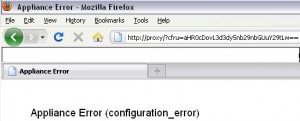Posted on Monday, 22nd February 2010 by Michael
Cpanel remote FTP backup script
Years ago I did web hosting as a side source of income. This led to me developing a lot of Linux based scripts to help automate my daily sysadmin responsibilities. Our hosting company was called ezhostingpro.com. Since then another party owns the domain but googling that and my name will lead you to several of my scripts being hosted by other sites. I posting the code on my site as I am finding many people on http://www.getafreelancer.com using codes I post on this site to bid on projects and win them.
This script is in two parts. The first part creates the backup and the second part transfers the backup remotely. The first part of the script makes use of the built in backup commands in cpanel. The script needs minor changes to be used by resellers instead of dedicated server owners.
Script 1:
#!/bin/bash
############################################
## ##
## EZHOSTINGPRO BACKUP FTP SCRIPT v1.0 ##
## Created by Michael LaSalvia ##
## http://www.digitaloffensive.com ##
## 2/23/04 rev 1 ##
############################################
## 1. Create a file called cpbackup.txt in /root
## 2. Place account names you wanted backup
## 3. Save file in /root
############ DO NOT EDIT BELOW #############
cd /root
for users in $(cat cpbackup.txt)
do
rm -rf /home/$users/cpmove-$users.tar.gz
/scripts/pkgacct $users
mv /home/cpmove-$users.tar.gz /home/$users/
cd /home/$users
chown $users.$users cpmove-$users.tar.gz
chmod 777 cpmove-$users.tar.gz
/home/$users/bkftp.sh
cd /root
done
Script 2: This script needs to beedited with the users ftp credentials and placed in the user home dir.
#!/bin/bash
##################################
## EZHOSTINGPRO REMOTE BACKUP ##
## created by: Michael LaSalvia ##
##http://www.digitaloffensive.com##
## DO NOT EDIT THIS FILE ##
## Name this file bkftp.sh chmod 777 ##
##################################
### VARIABLES ###
var_cpaneluser=’cpanel_user_goes_here’
var_remote=’remote_server_goes_here’
var_ftpuser=’remote_server_ftp_username_goes_here’
var_ftppass=’remote_server_ftp_password_goes_here’
cd /home/$var_cpaneluser
ftp -n $var_remote <<END_SCRIPT
quote USER $var_ftpuser
quote PASS $var_ftppass
del cpmove-$var_cpaneluser.tar.gz
put cpmove-$var_cpaneluser.tar.gz
quit
END_SCRIPT
exit 0
rm -Rf cpmove-$var_cpaneluser.tar.gz
I believe the newer cpanel system actually provides a built in method to do this, though since I do not have access to one to test I will post this any way. If you have any questions comments or concerns please feel free to contact me.
Posted in Code | Comments (1)
